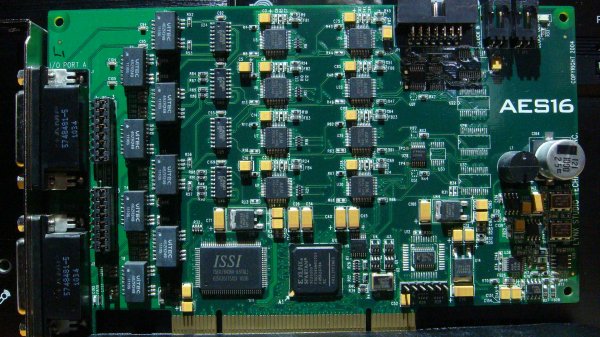Greetings All,
In an effort to eliminate/control emi/rfi emissions within the server (in order to improve the quality of playback), locating sources of strong emissions is important.
Does anyone know and can identify the following parts on a Lynx AES16 sound card, using the included picture as a reference?
1) the VRM 2) the DAC 3) switching regulator(s) 4) a clock, if any such discrete unit is used on this card
I did contact Lynx asking for this info but they simply refused to provide it, and I have no idea why; am guessing these details are deemed "trade secrets" or "classified".........???
Anyway, any and all help would be much appreciated.

In an effort to eliminate/control emi/rfi emissions within the server (in order to improve the quality of playback), locating sources of strong emissions is important.
Does anyone know and can identify the following parts on a Lynx AES16 sound card, using the included picture as a reference?
1) the VRM 2) the DAC 3) switching regulator(s) 4) a clock, if any such discrete unit is used on this card
I did contact Lynx asking for this info but they simply refused to provide it, and I have no idea why; am guessing these details are deemed "trade secrets" or "classified".........???
Anyway, any and all help would be much appreciated.












